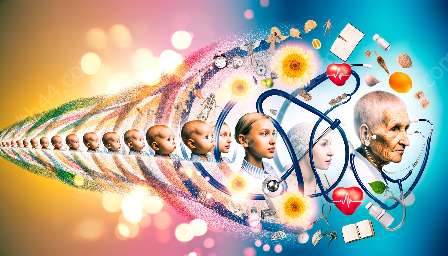Language development is a captivating and complex aspect of human growth and behavior that significantly influences lifespan development, health education, and medical training. From infancy to adulthood, the acquisition and refinement of language skills play a crucial role in cognitive, social, and emotional development.
The Foundations of Language Development
Language development begins in infancy, as babies engage in communicative exchanges with caregivers through cries, coos, and eventually, babbling. These early vocalizations form the building blocks of language, laying the groundwork for the development of speech and comprehension.
Infancy: During the first year of life, infants rapidly progress from making simple sounds to producing their first words. They start to comprehend basic gestures and words used in their environment, gradually developing the ability to communicate their needs and desires.
Early Childhood: As children enter the toddler and preschool years, their language skills undergo remarkable growth. They acquire an extensive vocabulary, learn grammatical rules, and enhance their conversational abilities, enabling them to express themselves with increasing complexity and coherence.
The Role of Language Development in Lifespan Development
Language development is intricately intertwined with lifespan development, influencing individuals across various stages of life. During childhood, language proficiency significantly impacts academic achievement, social interactions, and emotional well-being. In adolescence, the refinement of language skills contributes to critical thinking, self-expression, and the formation of personal identity.
Moreover, in adulthood and later stages of life, language continues to shape cognitive function, social engagement, and overall quality of life. The ability to communicate effectively supports mental agility, emotional regulation, and meaningful connections with others, highlighting the enduring impact of language development across the lifespan.
Language Development and Health Education
Language proficiency plays a pivotal role in health education, as effective communication is essential for disseminating medical information and promoting health literacy. Clear and concise language enables healthcare professionals to convey essential health-related instructions, treatment plans, and preventive measures to patients, fostering greater understanding and compliance.
Furthermore, in health education settings, language development influences the creation of educational materials, patient resources, and public health campaigns. By considering diverse linguistic needs and ensuring inclusivity, healthcare initiatives can better reach and engage individuals from various cultural and linguistic backgrounds, advancing the principles of health equity and accessibility.
Language Development in Medical Training
For aspiring healthcare professionals, language development holds significant relevance in medical training and clinical practice. Proficient communication skills are essential for building rapport with patients, conducting thorough medical interviews, and delivering accurate diagnoses and treatment recommendations.
Moreover, language development aligns with the ethical imperative of informed consent, as healthcare providers must ensure that patients fully comprehend relevant medical information and participate in shared decision-making processes. In this context, understanding the nuances of language acquisition and communication empowers medical trainees to cultivate empathy, cultural competence, and patient-centered care practices.
The Intricacies of Linguistic Diversity
Language development encompasses the rich tapestry of linguistic diversity present in global society. The acquisition of multiple languages, known as multilingualism, offers unique cognitive, communicative, and cultural advantages. Research indicates that bilingual and multilingual individuals exhibit enhanced cognitive flexibility, problem-solving skills, and intercultural competence, showcasing the far-reaching benefits of linguistic diversity.
To support linguistic diversity in health education and medical training, initiatives promoting language access and translation services are essential. By accommodating linguistic diversity, healthcare systems can foster greater trust, engagement, and equitable health outcomes for diverse populations.
Supporting Optimal Language Development
Recognizing the significance of language development, various strategies can nurture and support optimal language acquisition and refinement. Early intervention programs, speech and language therapy, and inclusive educational practices contribute to the early detection and intervention of language delays or disorders, promoting positive developmental trajectories.
Additionally, creating language-rich environments within homes, schools, and communities fosters a supportive context for language learning. Reading to children, engaging in meaningful conversations, and exposing individuals to diverse linguistic experiences enrich language development and cultivate a lifelong love for language and communication.
Conclusion
Language development stands as a multifaceted process with profound implications for lifespan development, health education, and medical training. Through understanding the intricate mechanisms and milestones in language acquisition, society can champion inclusive language practices that empower individuals to communicate, learn, and thrive across diverse life stages and healthcare contexts.


